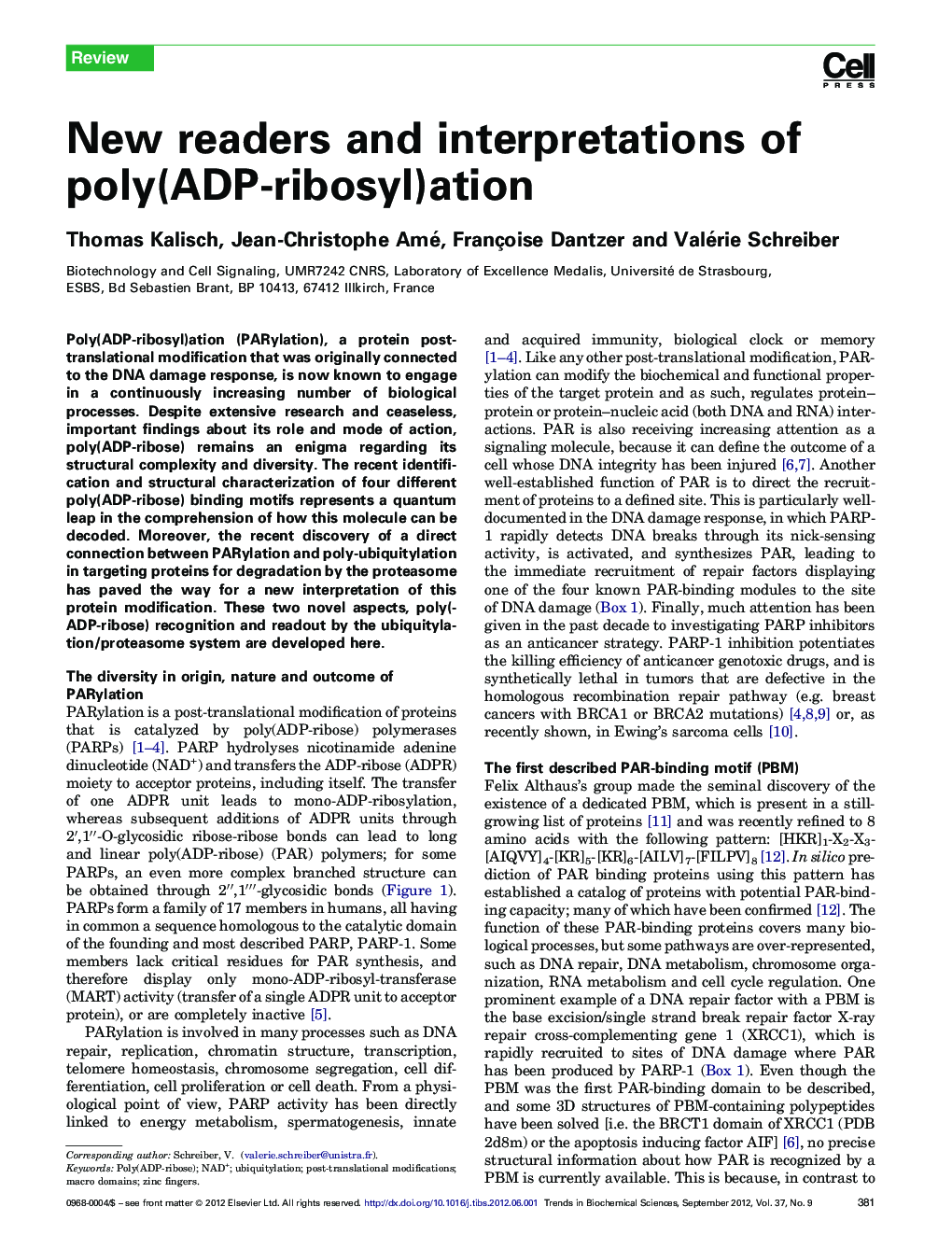| Article ID | Journal | Published Year | Pages | File Type |
|---|---|---|---|---|
| 2031683 | Trends in Biochemical Sciences | 2012 | 10 Pages |
Poly(ADP-ribosyl)ation (PARylation), a protein post-translational modification that was originally connected to the DNA damage response, is now known to engage in a continuously increasing number of biological processes. Despite extensive research and ceaseless, important findings about its role and mode of action, poly(ADP-ribose) remains an enigma regarding its structural complexity and diversity. The recent identification and structural characterization of four different poly(ADP-ribose) binding motifs represents a quantum leap in the comprehension of how this molecule can be decoded. Moreover, the recent discovery of a direct connection between PARylation and poly-ubiquitylation in targeting proteins for degradation by the proteasome has paved the way for a new interpretation of this protein modification. These two novel aspects, poly(ADP-ribose) recognition and readout by the ubiquitylation/proteasome system are developed here.
